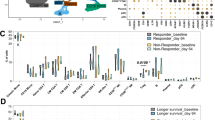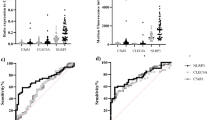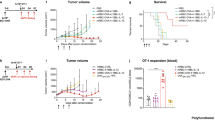Abstract
THE origin of plasma cells in inflammatory reactions in non-lymphoid tissue is perplexing. They are found in the circulation only in unusual circumstances1 and are not a usual cellular component of normal connective tissue. A possible source of these cells in areas of injury is suggested from investigations of lymphocytic cells in the vascular spaces and alveolar walls of the lung following the intravenous injection of complete Freund's adjuvant. The changes in some of these lymphocytes are similar to those described for white cells of the peripheral blood grown in tissue culture in the presence of a variety of materials. When phytohæmagglutinin, tuberculin, tetanus toxoid, diphtheria toxoid, smallpox vaccine, hæmophilus pertussis antigen, staphylococcal antigen, leukocyte antiserum, pollen extract and various tissue antigens are added to cultures of white cells from the peripheral blood, the small and medium sized lymphocytes enlarge and mitotic division may occur2–13. Tanaka et al.14 have described a developing Golgi apparatus, increased ribosomes and a small amount of endoplasmic reticulum in cultures of lymphocytes from peripheral blood.
This is a preview of subscription content, access via your institution
Access options
Subscribe to this journal
Receive 51 print issues and online access
$199.00 per year
only $3.90 per issue
Buy this article
- Purchase on SpringerLink
- Instant access to full article PDF
Prices may be subject to local taxes which are calculated during checkout
Similar content being viewed by others
References
Sundberg, R. D., in The Lymphocyte and Lymphocytic Tissue, 1 (Paul B. Hoeber, Inc., 1960).
Nowell, P. C., Cancer Res., 20, 462 (1960).
Berman, L., and Stulberg, C. S., Lab. Invest., 11, 1322 (1962).
Brandt, L., Börjeson, J., Nordin, A., and Olsson, I., Acta Med. Scand., 172, 459 (1962).
Carstairs, K., Lancet, i, 829 (1962).
Elves, M. W., and Wilkinson, J. F., Nature, 194, 1257 (1962).
Elves, M. H., Roath, S., and Israels, M. C., Lancet, i, 806 (1963).
MacKinney, jun., A. A., Stohlman, F., and Brecher, G., Blood, 19, 349 (1962).
Quaglino, D., Hayhoe, F. G. J., and Flemans, R. J., Nature, 196, 338 (1962).
Pearmain, G., Lycette, R. R., and Fitzgerald, P. H., Lancet, i, 637 (1963).
Hashem, N., and Rosen, F. S., Lancet, i, 201 (1964).
Ling, N. R., and Heisband, E. M., Lancet, i, 263 (1964).
Rabinowitz, Y., Blood, 23, 811 (1964).
Tanaka, Y., Epstein, L. B., Brecher, G., and Stohlman, jun., F., Blood, 22, 614 (1963).
Bach, F., and Hirschhorn, K., Exp. Cell Res., 32, 592 (1963).
Low, F. N., and Freeman, J. A., Electron Microscopic Atlas of Normal and Leukemic Human Blood (McGraw-Hill Book Co., Inc., 1958).
Moore, R. D., and Schoenberg, M. D., Brit. J. Exp. Path. (in the press).
Author information
Authors and Affiliations
Rights and permissions
About this article
Cite this article
MOORE, R., SCHOENBERG, M. Origin of Plasma Cells in Sites of Inflammation. Nature 203, 1293–1294 (1964). https://doi.org/10.1038/2031293a0
Published:
Issue date:
DOI: https://doi.org/10.1038/2031293a0



